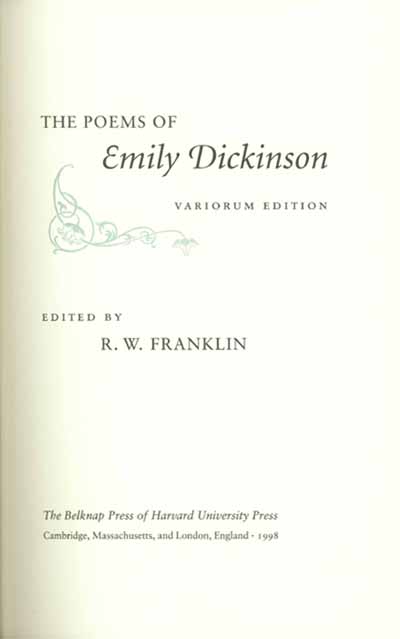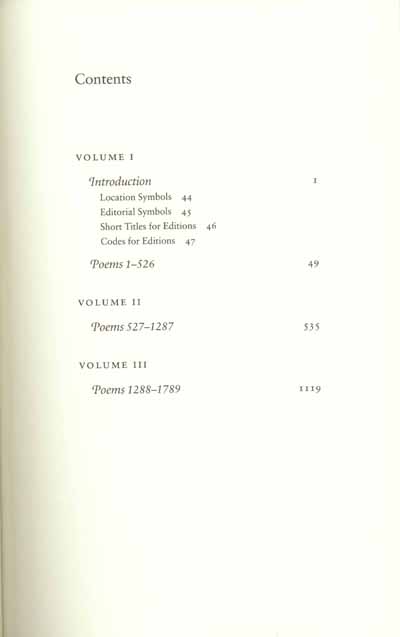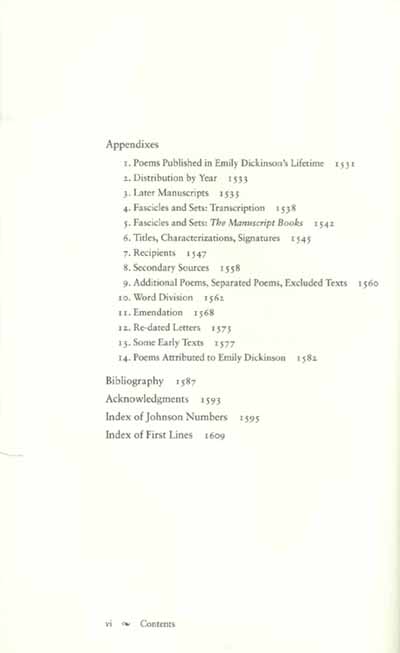Dickinson's
handwriting changed with remarkable frequency, especially in the
early years, permitting most fascicles before mid-1862 to be unpacked
and the pattern of their construction, sheet by sheet, to be seen.
Some forms changed more than others, with single letters such
as b, B, d, e, f, F, G,
H, I, p, P, w, W, y,
and Y and frequently occurring combinations such as and, ee, for,
ght, if, ing, it, of, the, to,
with, and you among the most helpful. Dickinson's
signatures (Emilie and Emily in various styles) were
indicative of period, as were her methods of writing quotation marks.
As her handwriting increased in size, it separated into
individual letters, a characteristic that can point to date. By 1871
the ligatures em and en had largely separated, as had al
and am by 1872 and an, ar, at, and av
by 1873.
The
present dating has had an advantage not enjoyed by Poems
(1955) in that it was accomplished after the reconstruction of the
fascicles reported in The Manuscript Books of Emily Dickinson
(1981). The sequence of the fascicle papers, if not always of
specific fascicles, was thus already known, and the fascicles and
sets, containing about two thirds of the poems, have been a sturdier
base upon which to study handwriting and assign dates than a series
of individual manuscripts. Another advantage is that the dating was
done after the Dickinson materials were available in libraries, so
that recurrent access could be had as needed. Thomas Johnson,
working from photostats and unclear as to the paper patterns of the
manuscripts in Millicent Bingham's possession, scattered the sheets
of the sets to different years. For those of the 1870s, having
cut up his photostats to handle the poems individually, he lost track
of the structure of the sheets themselves, dating the poems on a
given sheet erratically, those on one of them in Set 14 assigned to
three different years in contrary-order: about 1877, early 1876, and
about 1873.
While
Mabel Todd divided Dickinson's handwriting into three phases
—early, middle, and late — and Bingham refined them
somewhat, Johnson, in conjunction with Theodora Ward, who had done
pioneering work on establishing a chronology for the letters to her
grandparents, aspired to date the poems year by calendar year.
For the early ones this goal can be exceeded, with season or
section of the year indicated, though two difficult points are the
crossing between 1861 and 1862, where the exact line is hard to
establish, and the crossing between 1864 and 1865, where Dickinson's
pencil work in Cambridge yielded to fascicle sheets in ink again.
Thereafter as fascicle sheets become less frequent, leaving
documents to be studied and treated individually, dating becomes more
difficult. For the last decade there is a far larger quantity
of datable letters than for any earlier period, and the proportion of
the poems included in



